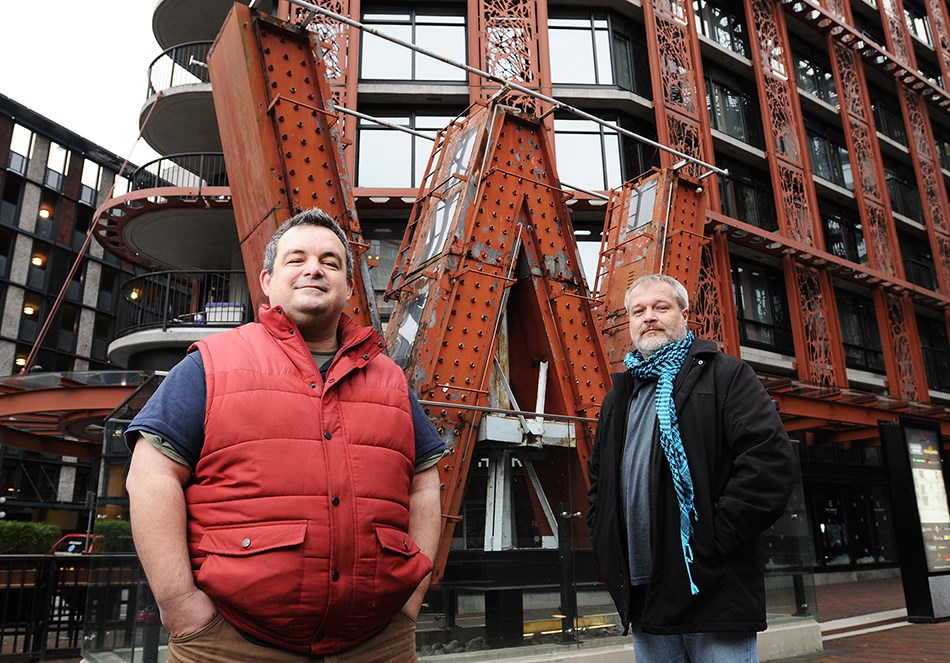Not all residents of the Downtown Eastside are happy with the City of Vancouver’s new plan for their community.
On Dec. 17 the city released its ambitious 30-year vision, in the works since August 2011, to transform the Downtown Eastside into a livable, economically healthy community with plenty of housing for all income levels.
Roland Clarke, secretary of the Downtown Eastside Neighbourhood Council, said his organization was largely cut out of the planning process in the later stages. He said the DNC tried to change its representative on the committee but that change was rejected.
The city’s planning department worked with a committee of community partners, co-chaired by the Downtown Eastside Neighbourhood Council and the Building Community Society, to develop the draft community plan.
“Between March and a couple months ago we were getting absolutely no reports from the Downtown Eastside process,” Clarke said. “We’re eager now to become part of the process.”
Clarke said the city should provide more support for community space in the Downtown Eastside, particularly giving the Woodward’s Building back to the community and waiving the $85,000 per year fee to use the building.
He also said there should be support for community arts and culture, including the street market held every Sunday in Pigeon Park, and for the establishment of a community-run health clinic. Clarke said he felt many larger concerns in the community were overlooked because of the focus on housing.
“Housing sucked the air out of everything else,” Clarke said.
Kevin McNaney, assistant director planning for the city, said housing was the plan’s primary focus.
The 30-year housing vision includes 3,000 market-rate housing units, 8,850 subsidized housing units, 4,400 new social housing units in the Downtown Eastside with 3,350 housing units outside the Downtown Eastside, 1,650 rent subsidies for social or market housing, and 2,200 upgrades to single-room occupancy units.
Pete Fry, chair of the Strathcona Residents’ Association, said he was concerned the proposed mix of housing would encourage land speculation.
“When you start up-zoning land for more density and taller heights, it creates land lift for the surrounding properties and suddenly those properties are worth more,” Fry said.
Fry also said he was unsure how the city plans to pay for the new housing. He said the city has committed to approximately 20 per cent of a $1 billion plan with the remaining 80 per cent of funding left to other levels of government, developers and non-profits.
McNaney maintains the plan has clear, achievable housing targets. “It’s actually achievable. We’re been very clear about how we’re going to implement new housing in the area, a healthy mixed income community with clear targets,” he said.
McNaney said public consultations on the Downtown Eastside community plan would be held in late January and early February.
Dates will be finalized in the new year. He said staff hope to have a completed plan for city council to consider in March.
Clarke said he will participate in the upcoming consultations but is not convinced it will make a difference, especially when it comes the proposed housing zoning and allocation.
“I think it’s been pre-baked. I think the technocrats and the old city planners have all gotten together and they’re not going to budge on these things,” Clarke said. “So what we’re going to try and do is get some community amenities from the city out of this process.”
amcneely@gmail.com
twitter.com/allisonmcneely



